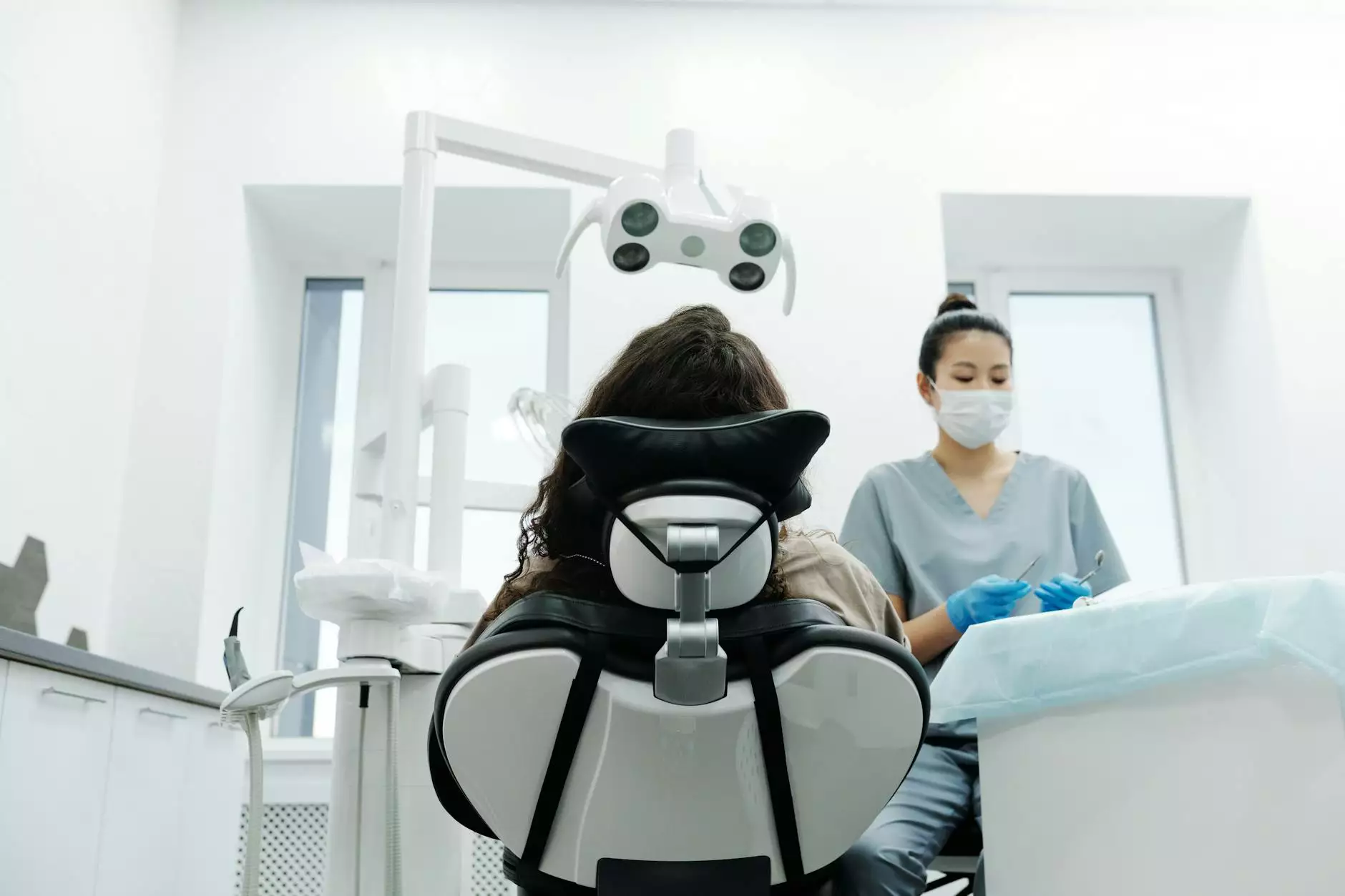Comprehensive Guide: Zirconia Crown vs Ceramic Crown

When it comes to restoring damaged or decayed teeth, choosing the right type of dental crown is crucial for achieving a durable, natural-looking, and functional smile. Among the most popular options in modern dentistry are zirconia crowns and ceramic crowns. Understanding their differences, advantages, disadvantages, and suitability can significantly influence your decision-making process. This guide aims to provide a detailed comparison between zirconia crown vs ceramic crown, equipping you with the knowledge needed for optimal dental health and aesthetics.
What Are Dental Crowns and Why Are They Important?
Dental crowns are custom-made caps that cover damaged, decayed, or weakened teeth to restore their shape, size, strength, and appearance. They are an essential component in restorative dentistry, offering protection for compromised teeth and enhancing overall oral health. Crowns are frequently used in procedures such as root canals, fracture repairs, and cosmetic enhancements.
Both zirconia and ceramic crowns serve similar functions but differ substantially in material composition, aesthetic qualities, and clinical performance. Their selection depends on several factors including location in the mouth, aesthetic demands, functional requirements, and patient preferences.
Understanding Zirconia and Ceramic Materials
What Is Zirconia?
Zirconia, or zirconium dioxide, is a high-strength ceramic material known for its impressive durability and biocompatibility. It is fabricated through a process that involves sintering zirconia powder at high temperatures, resulting in a robust and fracture-resistant crown. Zirconia crowns are often used in areas with high bite forces, such as molars, due to their exceptional strength.
What Are Ceramic Crowns?
Ceramic crowns primarily consist of porcelain or other forms of advanced dental ceramics. These crowns are designed to mimic the natural translucency and color of real teeth, making them highly desirable for front tooth restorations where appearance is paramount. Modern ceramic materials, like IPS e.max or lithium disilicate, offer elevated strength along with excellent aesthetic qualities.
Comparative Analysis: Zirconia Crown vs Ceramic Crown
1. Material Composition and Aesthetic Qualities
Zirconia crowns are known for their strength and opacity. While they can be made to look quite natural, their opacity sometimes limits their ability to exactly mimic the translucency of real teeth. However, newer ultra-translucent zirconia options have significantly improved aesthetics. Ceramic crowns, especially those made from lithium disilicate or porcelain, excel in mimicking the natural appearance of teeth, with exceptional translucency and color matching. They are often the preferred choice for front teeth because of their superior aesthetics.
2. Durability and Strength
Zirconia crowns stand out in terms of mechanical strength and fracture resistance. They can withstand biting and chewing forces in the back of the mouth effectively. This makes zirconia ideal for patients with bruxism (teeth grinding) or heavily restored posterior teeth. Ceramic crowns, although strong—especially in high-quality formulations—are generally more suitable for front teeth where aesthetic demands outweigh the necessity for maximum strength. They are less fracture-resistant compared to zirconia but can still perform well with proper case selection.
3. Biocompatibility and Gum Health
Both zirconia and ceramic crowns are biocompatible, meaning they are unlikely to cause allergic reactions or tissue irritation. Zirconia’s smooth surface promotes minimal plaque accumulation, thereby supporting gum health. Similarly, high-quality ceramic crowns have excellent tissue compatibility and generally support healthy gum tissue.
4. Manufacturing and Customization
Zirconia crowns are typically fabricated using CAD/CAM technology, ensuring precise fit and consistency. The process involves milling pre-sintered blocks into the desired shape, followed by final sintering for strength. Ceramic crowns are also produced via CAD/CAM or traditional hand-layered techniques, allowing for intricate shading and personalized aesthetics. The ability to glaze and stain ceramic crowns offers superior control over final appearance.
5. Procedure and Placement Considerations
Both crown types require tooth preparation, impression-taking, and fitting. However, zirconia crowns often require less tooth reduction due to their strength, allowing for minimally invasive procedures. Ceramic crowns may need more conservative tooth prep to ensure optimal aesthetics, especially when layering porcelain for translucency and color blending.
Advantages and Disadvantages of Zirconia Crowns
Advantages
- Exceptional durability and fracture resistance, suitable for high-stress areas.
- Biocompatible and hypoallergenic, minimal risk of tissue irritation.
- Excellent fit and precision manufacturing, durable in the long term.
- Ideal for patients with bruxism or heavy biting forces.
Disadvantages
- Less translucent than ceramic crowns, may affect aesthetics for front teeth in some cases.
- Potentially more difficult to adjust after placement due to hardness.
- Generally more expensive, reflecting their advanced technology.
Advantages and Disadvantages of Ceramic Crowns
Advantages
- Superior aesthetic qualities, closely mimicking natural teeth.
- Excellent translucency and color integration, especially for front restorations.
- Customizable with layered shading and glazing, for a natural appearance.
- Less abrasive to opposing teeth compared to older ceramic materials.
Disadvantages
- Less fracture-resistant than zirconia, more prone to chipping or cracking under extreme forces.
- May require more conservative prep to maintain aesthetics.
- Potentially shorter lifespan in high-stress areas.
- Cost can be high depending on material quality and lab work.
Making the Right Choice: Zirconia Crown vs Ceramic Crown
Deciding between zirconia crown vs ceramic crown depends on multiple factors:
- Location of the Tooth: Zirconia is ideal for molars, while ceramic is better suited for front teeth.
- Aesthetic Demands: Ceramic crowns provide superior beauty for visible teeth.
- Functional Needs: Zirconia offers greater strength necessary for high bite forces.
- Budget: Zirconia typically costs more due to material and manufacturing processes.
- Patient Preferences: Those valuing natural appearance may prefer ceramic, while durability-minded patients might lean toward zirconia.
Conclusion: Your Path to a Healthy, Beautiful Smile
The choice between zirconia crown vs ceramic crown is a nuanced decision based on individual dental needs and aesthetic aspirations. Modern advancements have significantly narrowed the gap between these materials, allowing for customized solutions that prioritize both form and function. Consulting with an experienced cosmetic or restorative dentist is essential to determine the most suitable option tailored to your unique oral health profile.
At Chiswick Park Dental, we specialize in providing comprehensive dental solutions involving cutting-edge materials like zirconia and ceramic crowns. Our expert team is committed to helping you achieve a confident smile that lasts a lifetime.
Additional Considerations for Optimal Dental Restoration
Beyond choosing the right crown material, diligent oral hygiene, regular dental check-ups, and professional cleanings are vital for maintaining your dental restorations' longevity. Proper care ensures that your investment in a beautiful and functional smile endures for years to come.
As technological innovations continue to evolve in the field of dentistry, the future holds even more resilient, natural-looking restorative options. Staying informed and working closely with your dental provider will ensure you receive the best, most personalized care.
Call to Action
If you're considering dental crowns and want to explore the best options tailored for you, contact Chiswick Park Dental today. Let our team of experienced dentists guide you through the process of achieving optimal oral health and a radiant smile.









